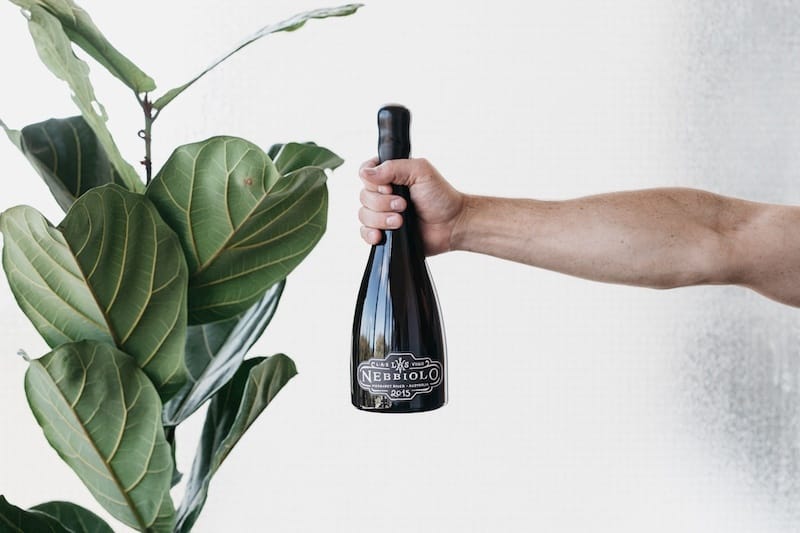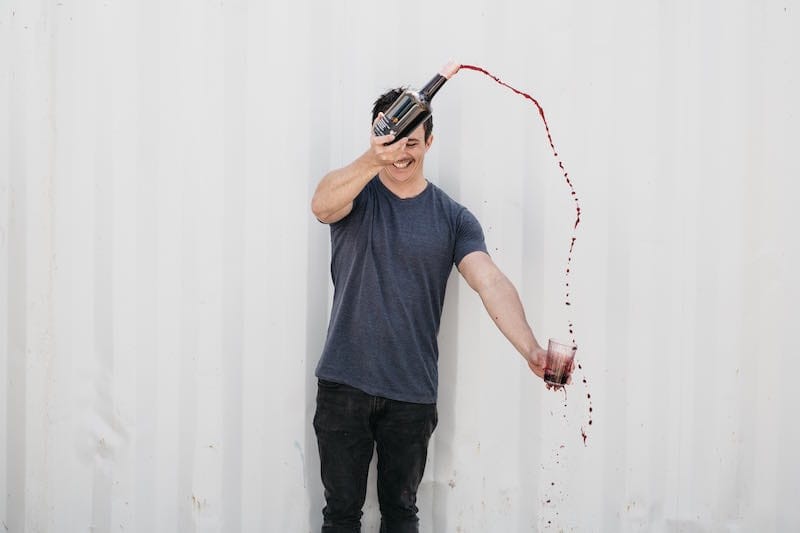
A new generation of Chinese academics, consumers and winemakers are on a mission to bridge the cultural gap between Australian wines and their homeland. We explore the view on Chinese export from across the pond.
The figures are promising. Staggering, even. The annual growth rate in Australian wine exports to China have increased by 51 percent in the last 12 months. Overall, 75 percent of exporters into China are experiencing growth in that market.
“It’s obviously going to be calibrated in different levels of where they’re at in terms of brand presence and investment into the market,” Wine Australia CEO Andreas Clark says. “The FTA cuts have given it increased impetus and we’ve got no reason to think that strong growth won’t continue into the medium-to-long term. Everything is pointing in that direction.”
So what is the view like from across the pond? Where Penfolds is a household name, small boutique wineries are attempting to claim their slice of the pie, and academics and increasingly savvy wine consumers are looking to Oz as a place to learn, drink, invest and make some serious moolah.
“Wine is not like Coca-Cola,” Fei Zheng says. “The diversity of wine is a very important part of its charm, so the domination of large Aussie wine companies will not be a good thing for a maturing market.”
Fei has worked as sales manager for wine companies in Beijing, including DongDingHe, Oenophile, and Swan Wine Group. He is currently studying a master’s of biology tech at Adelaide University and recalls the rise of Aussie wines well.
“At the beginning, the demand was driven by Penfolds because large importer and educator ASC was representing them,” he says. Later, lower priced wines such as Yellow Tail moved in. “This started in 2007 and 2008, which were quite good vintages. So the Chinese consumers have a very good impression of Aussie wines.”
He says Chinese wine consumers can be divided into two segments. Firstly, wine enthusiasts with indepth knowledge about wines who tend to consume more sophisticated wines. “Mainly from old world, but some new world as well. The other part is group purchase (wholesale) by corporations and groups, who tend to use wines as gifts and benefits for employees and in business. This part of the market is dominated by big Aussie wine brands, but small wineries are benefitting as well, mainly due to the trust of Aussie wine regions built upon the publicity of the bigger brands.”
Chao Dang was 17 when he started drinking wine at home with his parents in Baoding, 150 kilometres south of Beijing.
“I started drinking wine quite early. This is typical because in China the wine thing started around 2006 to 2007. Mum was part of that wave and started drinking it every night.”
Back then, they drank locally produced Chinese wines. “I can still remember what it tasted like. It was so juicy and fake. But still, she was drinking it and asked me to drink one glass per night with her.” It wasn’t exactly an exercise in wine appreciation.
“People started drinking wine because they believe in the health benefit of wines. Ninety percent of the wine sold in China was red and it’s still like that.”
He likens wine to olive oil, which became popular around 10 years ago when people began to purchase it as gifts. “They think olive oil is healthier than peanut and sunflower oil, which we usually used. Now every household has a lot of olive oil. They started cooking with it and searching for uses for it, then it became part of people’s lives. Same with wine. People stated giving wine as gifts because they believed it was a gesture to wish you good health.”
Chao was 21 when the wine bug really hit. He was offered an opportunity to study his masters at Lincoln University in Christchurch, New Zealand, and a wine course was suggested. He was researching the industry when he stumbled upon 13-part National Geographic documentary Exploring the Vine. The 2010 doco follows three young winemakers on a discovery of the South African wine industry. Chao watched it twice – consecutively. “At 4am I went to my dad, woke him up and told him I’d decided what to do with my life.”
He’s been dedicated to the good stuff ever since. When not studying a PhD in wine science with ARC’s training centre for innovative wine production and the University of Adelaide, Chao can be
found analysing the cultural challenges between Australian wine and his homeland. “Traditionally, wine is not part of China’s culture but traditionally we have a lot of alcoholic drinks. We have Chinese wine (Yellow Jiu) made from grains. People in China drink a lot of spirits and beer. Beer is number one, so for wine as a foreign product, to go into that you need to be part of that culture.”
Chao set up a company called Second Round Australia Pty Ltd as a way to bridge that gap, based on the concept of one wine for one moment. It’s about matching varieties to occasions such as birthdays, the zodiac calendar, special events and Chinese dishes. “Basically the idea is to attach an identity of a wine in that market so that identity is part of people’s lives. In Italy, when you eat pizza they give you chianti in a traditional carafe in a basket. You don’t have to ask for the brand, it just comes. You drink it as a pizza wine. It’s the same thing in several countries. When you think of Champagne you think of celebration. That’s a cultural link.”
On the production side, Chao works with boutique growers who can invest into the brand to take advantage of sales in the form of bonus share. “There is a lot of optimism, and from what I see the market is far from saturated. Very few companies have tried to approach everyday consumers. This is the gap. ASC spends a lot of money to establish training and wine education in China. I think that’s what we need to do. Try to teach them how to describe wines and how to appreciate wines.”
Education is important both in Oz and on Chao and Fei’s home turf. “It is hard for the consumers to know how to buy wines, how to choose wines or how to drink wines,” Fei says.
“They need basic knowledge of wine, foreign language and foreign wine regions. This gap is very hard to overcome for the general population, so at this stage, wine is consumed more by people with an affinity with western culture.”
Wine Australia is trying to bridge that gap. “I’m always surprised by the turnout of people who are champing at the bit to come to our events,” Andreas says.
“Our China Wine Awards are the big one. It’s an opportunity for us to acknowledge everyone who is helping to drive the Australian category, whether they’re retailers online, traditional, educators or distributors.”
The most recent awards night was held in August. “It was a great night. There was a great buzz in the room and atmosphere. We built some masterclasses around that. They were packed. People were soaking up as much knowledge as they can.”
Info sessions were run by James Halliday, a Chinese sommelier and The Australian Wine Research Institute. “We had a couple of scientists talking around the peppery components of shiraz and the science that sits behind what they taste like. The room was full. It was a relatively young crowd and they want to learn.”
It’s something LAS Vino winemaker Nic Peterkin noticed during multiple trips to Shanghai. He found cross-cultural flavour descriptions important, too.
“A lot of people previously bagged out consumers in China but when you go there they are actually genuinely interested and sophisticated with their palate. I think a lot of it comes down to finding out what that market wants and needs from Australian wine.”
The Gourmet Traveller 2016 Young Winemaker of the Year is based at Margaret River and comes from strong winemaking stock. His mother Shelley is the daughter of Di and Kevin Cullen and his father Mike founded Pierro. Nic grew up among the vines and has precious childhood memories of mateship and the great outdoors but the challenges involved in starting his own brand (LAS stands for ‘luck, art, science’) were a shock.
“I think the biggest hindrance I have is government. If you look at all those guys at Sidewinender [an Adelaide wine-tasting event showcasing boutique interstate winemakers] they are so small. Most of them are one or two person operations. To have the same administration burdens as a business with 100 staff that exports all around the world and has a $100 million budget… it’s pretty much, as far as government is concerned, the same administration burden.”
His own export journey kicked off in London – something he puts down to luck. “I went over there and my cousin was working for a company called Liberty, which is a very good distributor in the UK. I went with wines to show her because she’s into wine and she said, ‘Why don’t you show my boss? Have a chat with him and show him the wines – he’d be interested in seeing them’. He imports Shaw and Smith, and Cullen. I went in, we didn’t even taste the wines – just had a chat and I left him the wines. He emailed me and said, ‘How much can I have?’”
This was before Nic had his liquor licence in Australia. “I said ‘Cool…’ and made it all up. I had to make up a price because I hadn’t priced it.”
It was a nod of confidence from afar. “No one wanted to take this random wine that nobody knew about from a guy nobody had heard of who was making weird wines. But maybe the wines were okay.”
Production is around 200 cases per wine (800 in total), half of which is exported. The wines are available in London, Tokyo, Australia and Shanghai through Pran Cellar. The Shanghai connection came from multiple trips to China and a hell of a lot of trust. “I’ve been to Shanghai four or five times now – for a holiday once and also to work with Pierra. On the last trip [last year in November], I had a chat with the lady distributing the wine there, just a conversation over dinner. She said, ‘Why don’t you send us the wines and we’ll see how they go’.”
Nic sent his wine across before a big consumer trade event in July 2016. “I think they were trying to see what the public’s reaction to them was. It went really well and they said, ‘Yep, we’d love to take it’.”
The distributor trust building came up trumps. “I’ve met them four times, we know how each other works so there’s trust in how that’s happening.”
Chinese distributor Jassie Dong studied in Australia and helped Nic bridge cultural gaps. “She was part of the wine business studies at the University of Adelaide and had that insight,” Nic says.
He says red tape poses its own set of challenges. “I spend a lot of time on that stuff … It’s hard. The other thing with China is the challenge of administration.” As a solo operator, Nic does it all. The mountain of paperwork involved in getting his wine through customs was hard to scale. “That was a big hindrance.”
Fei says it is important for smaller wineries not to be too ambitious. “If they are too ambitious for market share, they will drift away from their core value and neglect their best position in the market. What they should do is focus on one spot of the market with their strengths and cultivate this with proper branding work. Smaller wineries should make adjustments on their products when necessary, such as flavour profile and packaging. Learning about the trends of aesthetics in China is very important.”
Nic had to re-label some of his wines. “I can’t export Portuguese Pirate Blend because it has the word ‘Portuguese’ in it. I can’t export the pinot [2015 Albino Pinot] because it has the word ‘pinot’ in it. Little things like that.”
He found that flavour descriptions are also important. “It goes well with King George whiting? Nobody knows what that is in China so you’ve got to make that relatable. It’s marketing 101: find out what people want and supply them with that.”
It all hails back to taste and Chao’s mission to match wine with Chinese culture and tastebuds, and is the reason he meets regularly with peers (gastronomy and sensory experts, winemakers, and academics) to dissect traditional dishes. The latest was Peking duck. “I choose about a dozen wine styles, including some cliché styles [as recommended by people doing sales in China],” Chao says. “They said pinot matches with Peking duck. We did some trials, not scientific trials but over dinner – with different wine styles – and found pinot doesn’t work.” Neither did Premier Krug, dry riesling or grenache. “When you eat Peking duck, which is sweet, savoury and heavy flavoured, and you drink pinot, it’s like bitter water. It doesn’t work at all. The same applies to grenache which is also a sort of light variety.”
What did work was a good combination of fruit and oak. “Something with a bit of sweetness: an oaky chardonnay which gives you some sweetness, vanilla and some ice-cream from the oak, or a good, complex shiraz.”
It’s not just a matter of taste, though. According to Fei, cross-cultural personality traits are also a factor. “Western culture values exploration, so Westerners are more likely to explore different wines more often. However, a lot of Chinese tend to be more conservative and buy things they know. This may create a big challenge for Australian wine brands. On one side, you have the sophisticated wine drinkers who tend to explore everything in China, and on the other side, you have conservative wine drinkers who want to drink the same thing every day. Catering to the needs of more conservative wine consumers is very important.”
And what of language barriers?
“It’s the hard thing about China as a market… in London I kind of know where the wine is being sold and it works well with branding because the wine goes into Gordon Ramsay’s restaurant or Heston Blumenthal’s. You know those restaurants and how they work, whereas China is still a little bit embryotic in terms of the market.”
When it comes to China, there’s no doubt Aussie winemakers are in confusing but exciting times. “If you look at Australia or parts of Europe, there are ways things are done; everyone buys their wine from bottleshops, everyone goes to a restaurant, there’s always a distributor involved in each state. Whereas in China, they’re saying, ‘Well, I’m the distributor, maybe we can set up an online sales system that goes straight to the consumer. Or maybe we could sell the wine exclusively to hotel chains.’ They’re still figuring out what works and making their own rules.”
The exciting part is that, in a technologically advanced country comprising 1.35 billion people, the possibilities are endless.
“Broadly speaking, the e-commerce monopoly in China is huge,” Andreas says. “It is a country built on e-commerce. The analogy I draw is, on the way home you might think, ‘I need some milk’ – [in China] they won’t go past the store, they’ll just tap a button and it’ll be done online and delivered.”
In the wine space, retail companies such as Sichuan 1919 (1919.cn) are amping up delivery. “1919 is built around the delivery of wine in 19 minutes,” Andreas says. “If you’re at a restaurant and want a bottle of wine, they’ll deliver it there. They’ve got about 1000 stores and are looking to significantly ramp that up. They have a retail presence but it’s almost like that’s their distribution hub for online sales.”
It’s big business – in September 2016, online marketplace Alibaba.com launched a wine lovers’ version of Singles’ Day – an online sale of pretty much anything you can imagine – which racked up 120.7 billion CNY (17.79 billion USD) in November 2016. The Online Wine Festival, held on 9 September, is part of online store Tmall and features Australian wine. It is supported by Wine Australia.
“We’ve facilitated an opportunity for Australian exporters who have a product in market. It’s an Australian wine store on Alibaba’s platform. It’s massive. I went to their headquarters earlier this year in Hangzhou – they’re like Google – it’s that kind of level,” Andreas says.
“It was the first time we did the wine sale. I think it might get bigger and better. What we did was set up an opportunity for some brands to work with Alibaba and another company involved [vinehoo.com, the operator behind the online platform]. Our role is to connect them, then exporters and producers decide if it’s a channel they want to pursue and if so, what skews and channels they want.
“Ultimately, it’s their commercial decision to work out but they need to make sure it marries up with their other distribution models in the market, so that they’re sympathetic to each other and they don’t end up cannibalising what they’re doing in a more traditional sense.”
Andreas believes big-name online businesses such as Alibaba can act as a confidence builder for consumers concerned about the black market.

“It’s getting better but the concerns are broader – it’s not just wine. Alibaba instigated the Singles’ Day sales, which has ridiculous numbers in terms of dollars and transactions. There was some commentary around ‘counterfeit products sold here’ but Alibaba has responded well. They are insidious in terms of brand protection and if there’s any questioning, they’re vigilant on it. It’s an issue but I think some of these platforms can help resolve some of these issues. Their credibility depends on it.”
Again, it’s all about trust, as Nic points out. “My advice is to build trust and build your relationships and brand. Have a good-quality product, build that and make the time to visit. Every time we go to China, sales actually increase,” he says.
“In a very backwards way, you’re providing what has always been done. If the market doesn’t understand that, you can’t say, ‘Well they’re unsophisticated’. That’s such a bad way to look at it. They’re in the power position. There’s a billion people that drink two-to-three litres of wine per person, per capita every year… you’ve got to find out what they want, not them have to find out that you’re making wine.”
Each case is unique. “I could line up 10 exporters in a row and get 10 totally different experiences,” Andreas says. “It’s not this homogenous, uniform story out there. It is huge and evolving quickly.” He pauses. “The headline numbers are really positive and that’s real. Like anything, these things aren’t uniform. Some have a stronger brand and are undoubtedly well known.”
Asked to cite an example, he mentions Treasury. “They’ve invested heavily in their operations there and their marketing spend, and that’s delivering results – we’ve seen that come through in their public announcements and their share price etc. That’s acting as a real positive path finder. Penfolds as a brand is a positive story – not only for them but for the Australian category.”
But it’s not a bonanza. “It’s not like you just make the wine and ship it. Wine-makers know that. I’m not telling exporters to suck eggs. Those who have had success there have been there for the long term. It hasn’t just happened overnight. They’ve been in the market for nearly 15 years and worked the market like any other export market. They’re up there regularly, cultivating relationships, which is important with all business but particularly important in China,” he says.
“There are still some who go to China and haven’t had the results they’ve seen others get, so there is a real mixed story there. Fundamentally, it’s a very positive story but it’s incumbent on everyone thinking beyond headlines and understanding the market, who you’re working with and what opportunities you’re trying to pursue.”
EXPORT TIPS
from Wine Australia
CEO Andreas Clark
Understand the market
Do your homework and due diligence. Tap in to us. This is what we’re here for. We’ve got a lot of information, we’re rich in data and we analyse market opportunities in China. We put on a sweep of events there to enable people to get into the market and pour their wine. Look at how to take advantage of that and our annual calendar of events, whether it’s a multi-city roadshow or stands at some of the major trade shows.
Understand the regulatory maze
We publish detailed guides on how to comply with Chinese standards. Wine being an alcoholic beverage is always highly regulated in each market. People need to understand how they’re meant to comply. The mere fact they comply with Australian laws doesn’t mean they comply with overseas laws.
Put in the time
Get into the market. Don’t rush any arrangements, go in there and understand the market, and meet with potential partners.
Protect your IP
Before you do anything, make
sure you register your IP. The Chinese have a system where you stop usage of your trademark if it’s not registered. It may be early days for a brand but you never know how valuable that IP might be further down the track if you have some success.













Recent Comments